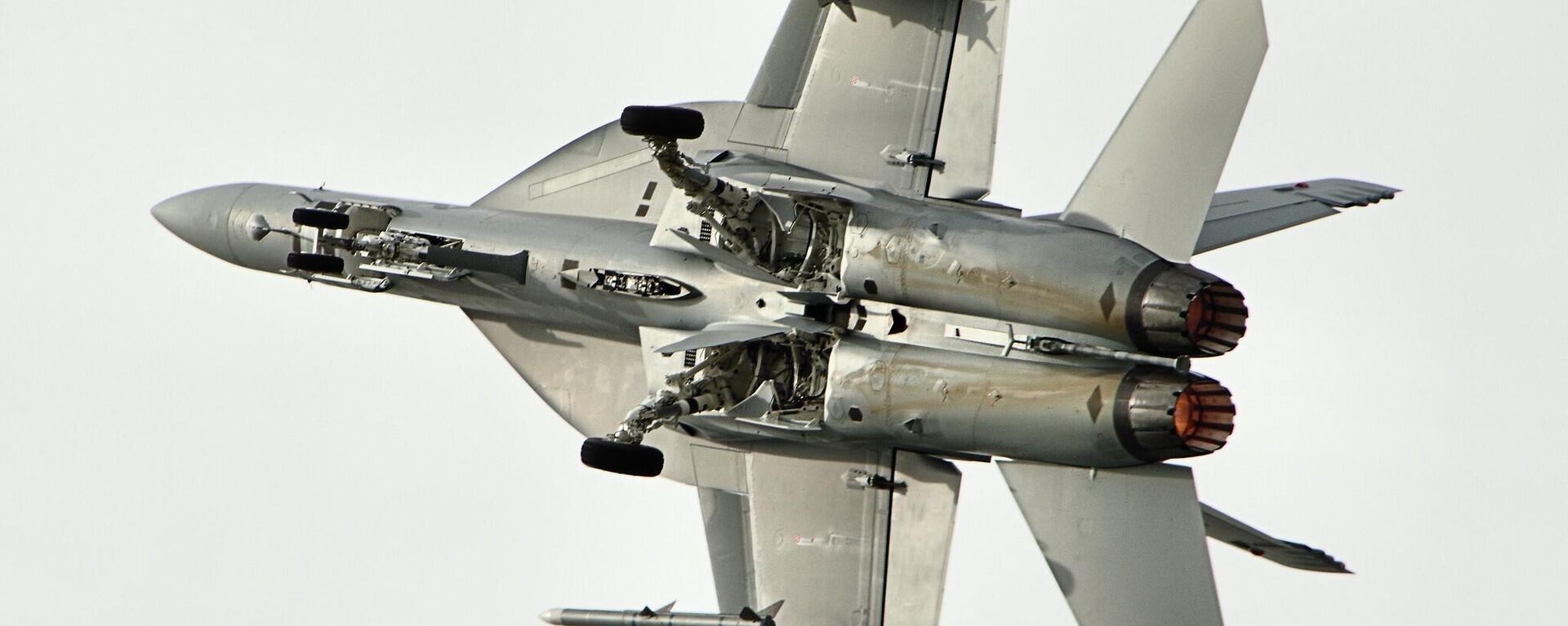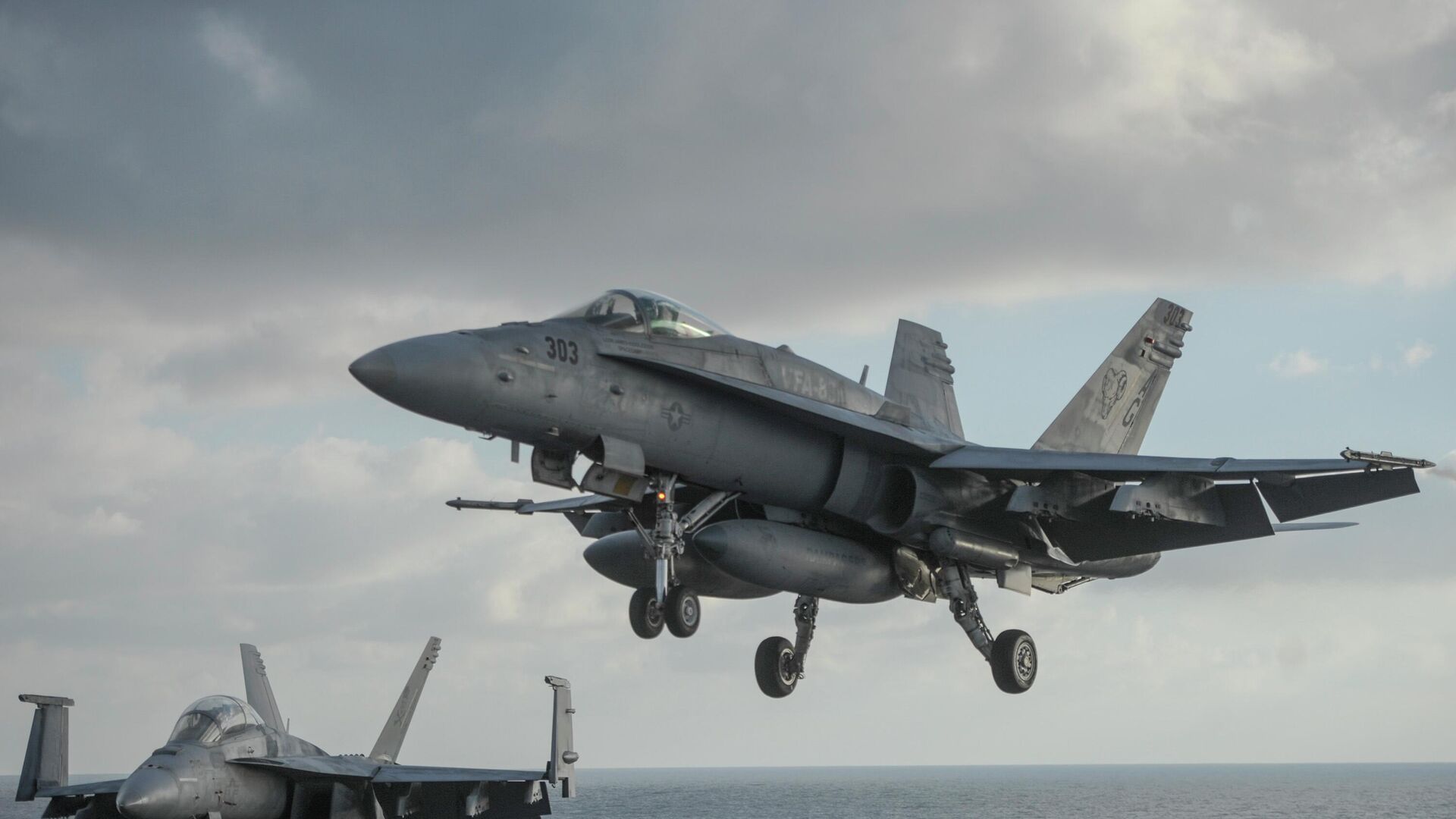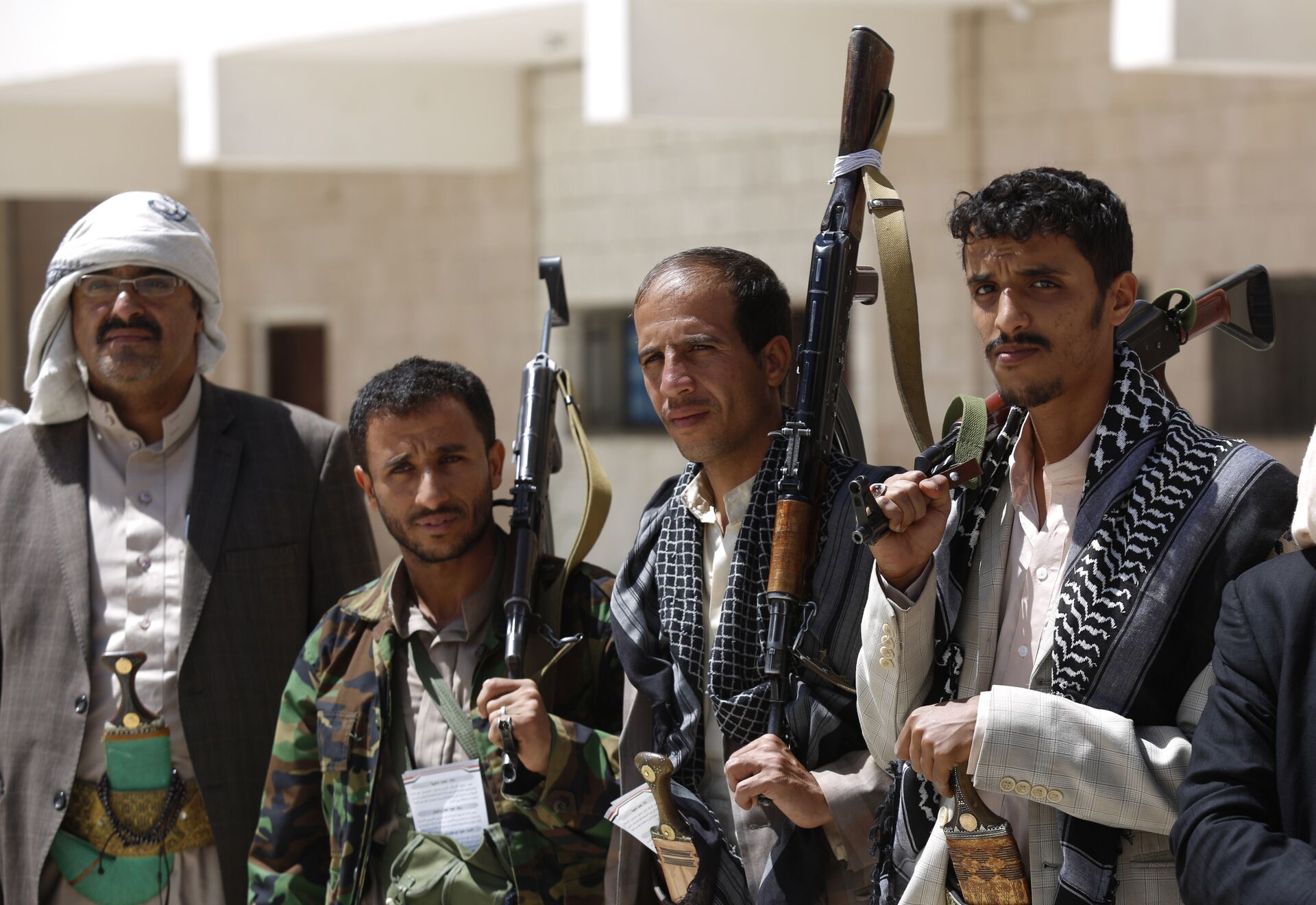https://sputnikglobe.com/20241223/houthis-likely-shot-down-us-jet-over-red-sea---former-pentagon-analyst-1121247045.html
Houthis Likely Shot Down US Jet Over Red Sea - Former Pentagon Analyst
Houthis Likely Shot Down US Jet Over Red Sea - Former Pentagon Analyst
Sputnik International
The Yemeni Ansar Allah group (Houthis) have claimed responsibility for shooting down a US Navy F/A-18 jet over the Red Sea on December 22. The US Central Command, however, stated that the warplane was downed by "friendly fire" from the guided missile cruiser USS Gettysburg.
2024-12-23T17:54+0000
2024-12-23T17:54+0000
2024-12-23T17:54+0000
military & intelligence
us
karen kwiatkowski
red sea
houthis
pentagon
analysis
us central command (centcom)
middle east
iran
https://cdn1.img.sputnikglobe.com/img/07e6/08/08/1099402510_0:0:3001:1688_1920x0_80_0_0_d25f1c77d911f8ea2b4ff8634ea83031.jpg
"We know the Houthis are war-hardened, extremely tough, smart, and motivated," retired US Air Force Lt. Col. Karen Kwiatkowski, told Sputnik, commenting on the group’s alleged downing of a US warplane. "They have a variety of drones and hypersonic missiles, and they are fighting a long war for fundamental reasons, specifically to free the Arab world from Israeli, NATO, and US domination."The CENTCOM explanation seems questionable to Kwiatkowski for three reasons:How Could the Houthis Have Downed the US Warplane?Kwiatkowski noted that the F/A-18 was struck shortly after takeoff, as it was gaining speed and altitude.Why is the US Navy Downplaying the Houthi Missile Threat?According to Kwiatkowski, the primary reason for downplaying is that "the US Navy and Air Force are aging, overstretched for the types of global missions its politicians demand, and demoralized by both the politics of 'war' and extremely poor military leadership."
https://sputnikglobe.com/20241222/houthis-claim-to-down-us-fa-18-in-bold-strike-on-aircraft-carrier-in-red-sea-1121238645.html
https://sputnikglobe.com/20241031/unable-to-wrest-control-of-red-sea-from-houthis-us-and-uk-launch-fresh-strikes-on-key-yemeni-port-1120740607.html
red sea
iran
israel
Sputnik International
feedback@sputniknews.com
+74956456601
MIA „Rossiya Segodnya“
2024
News
en_EN
Sputnik International
feedback@sputniknews.com
+74956456601
MIA „Rossiya Segodnya“
Sputnik International
feedback@sputniknews.com
+74956456601
MIA „Rossiya Segodnya“
did houthis shoot down a us jet over the red sea, houthis have claimed responsibility for shooting down a us f/a-18, houthi missile threat, the pentagon's embarrassement, the us central command, the red sea crisis, the israeli-palestinian conflict
did houthis shoot down a us jet over the red sea, houthis have claimed responsibility for shooting down a us f/a-18, houthi missile threat, the pentagon's embarrassement, the us central command, the red sea crisis, the israeli-palestinian conflict
Houthis Likely Shot Down US Jet Over Red Sea - Former Pentagon Analyst
The Yemeni Ansar Allah group (Houthis) have claimed responsibility for shooting down a US Navy F/A-18 jet over the Red Sea on December 22. The US Central Command, however, stated that the warplane was downed by "friendly fire" from the guided missile cruiser USS Gettysburg.
"We know the Houthis are war-hardened, extremely tough, smart, and motivated," retired US Air Force Lt. Col. Karen Kwiatkowski, told Sputnik, commenting on the group’s alleged
downing of a US warplane.
"They have a variety of drones and hypersonic missiles, and they are fighting a long war for fundamental reasons, specifically to free the Arab world from Israeli, NATO, and US domination." The CENTCOM explanation seems questionable to Kwiatkowski for three reasons:
1.
The Pentagon typically avoids admitting friendly fire incidents due to the embarrassment. The quick acknowledgment after the crash suggests the truth might be even more embarrassing.
2.
The incident is being downplayed and underreported in domestic news, aside from the survival of the pilots.
3.
There is confirmed evidence of Houthi capabilities to
hit ships,
drones, and slower-moving aircraft in the Red Sea over the past 15 months.

22 December 2024, 15:37 GMT
How Could the Houthis Have Downed the US Warplane?
Kwiatkowski noted that the F/A-18 was struck shortly after takeoff, as it was gaining speed and altitude.
"It is likely that the countermeasures in the F-18 were not usable so soon after takeoff and at the altitude they were hit," she suggested. "Security for takeoff is the carrier battle group’s primary responsibility."
Additionally, if a Houthi missile attack was detected, it's possible that US defense systems were trying to avoid friendly fire. This algorithm might have allowed the missile or drone to find its target so close to the USS Harry Truman, within the US-friendly zone.
Why is the US Navy Downplaying the Houthi Missile Threat?
According to Kwiatkowski, the primary reason for downplaying is that "the US Navy and Air Force are aging, overstretched for the types of global missions its politicians demand, and demoralized by both the politics of 'war' and extremely poor military leadership."
"The US Naval offensive posture – 12 nuclear Carrier Battle Groups with associated submarine escorts – has become a global target and a technological sitting duck," which are "hard to man, expensive to operate, and difficult to defend."
The needed changes are being resisted by current military and political leadership, according to the former Pentagon analyst.
"It is the end of this model, and a time for a new US military posture that matches its actual means and constitutional goals. And, dare I say at this time of year, a push for peace," Kwiatkowski concluded.

31 October 2024, 17:56 GMT





